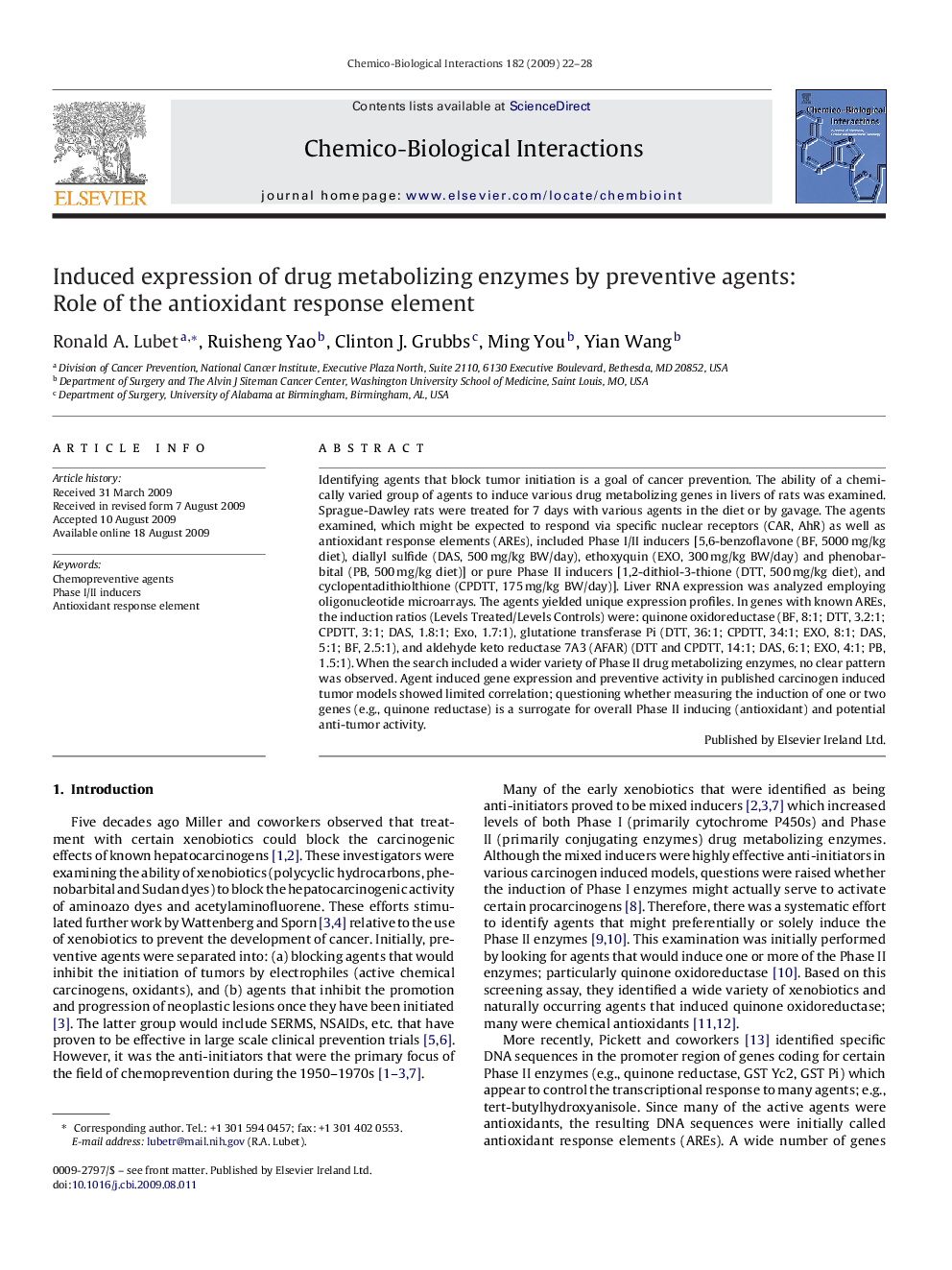| Article ID | Journal | Published Year | Pages | File Type |
|---|---|---|---|---|
| 2581264 | Chemico-Biological Interactions | 2009 | 7 Pages |
Identifying agents that block tumor initiation is a goal of cancer prevention. The ability of a chemically varied group of agents to induce various drug metabolizing genes in livers of rats was examined. Sprague-Dawley rats were treated for 7 days with various agents in the diet or by gavage. The agents examined, which might be expected to respond via specific nuclear receptors (CAR, AhR) as well as antioxidant response elements (AREs), included Phase I/II inducers [5,6-benzoflavone (BF, 5000 mg/kg diet), diallyl sulfide (DAS, 500 mg/kg BW/day), ethoxyquin (EXO, 300 mg/kg BW/day) and phenobarbital (PB, 500 mg/kg diet)] or pure Phase II inducers [1,2-dithiol-3-thione (DTT, 500 mg/kg diet), and cyclopentadithiolthione (CPDTT, 175 mg/kg BW/day)]. Liver RNA expression was analyzed employing oligonucleotide microarrays. The agents yielded unique expression profiles. In genes with known AREs, the induction ratios (Levels Treated/Levels Controls) were: quinone oxidoreductase (BF, 8:1; DTT, 3.2:1; CPDTT, 3:1; DAS, 1.8:1; Exo, 1.7:1), glutatione transferase Pi (DTT, 36:1; CPDTT, 34:1; EXO, 8:1; DAS, 5:1; BF, 2.5:1), and aldehyde keto reductase 7A3 (AFAR) (DTT and CPDTT, 14:1; DAS, 6:1; EXO, 4:1; PB, 1.5:1). When the search included a wider variety of Phase II drug metabolizing enzymes, no clear pattern was observed. Agent induced gene expression and preventive activity in published carcinogen induced tumor models showed limited correlation; questioning whether measuring the induction of one or two genes (e.g., quinone reductase) is a surrogate for overall Phase II inducing (antioxidant) and potential anti-tumor activity.
